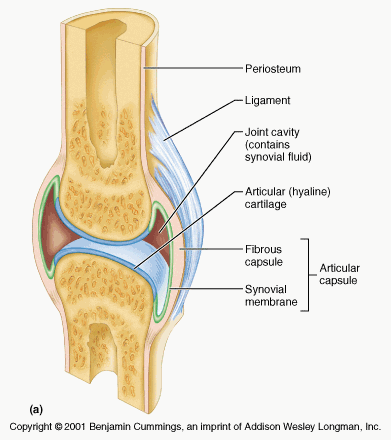Something that I became only very recently aware of about the anatomy of long bones might jeopardize a lot of the research and proposed ideas on how to increase height has come about.
 It seems that for long bones, underneath the articular cartilage at the ends on the epiphysis, there DOES NOT seem to be a layer of periosteum!
It seems that for long bones, underneath the articular cartilage at the ends on the epiphysis, there DOES NOT seem to be a layer of periosteum!
All that you need to do is look at the diagram/picture to the right which I found from another website to see that the periosteum does not go under the articular cartilage, but moves around the cartilage once it reaches the synovial joints.
Something that I have been claiming for at least a few posts was the idea of stimulating the periosteum which I believed before was under the articular cartilage at the end of the long bones. New pictures and diagrams seem to show that it is not true.
Due to how the process of appositional growth seems to function (at least at my level of understanding months ago), where the thickness of the cortical bone layer of the long bones seems to stay constant, even though the periosteum is supposed to be constantly making new layers on the outside, I had assumed that for the long bones to stay with the same length over time there would be needed a periosteum layer on the ends of long bones as well. The rate of osteoblasts and the rate of osteoclasts are supposed to be equal where the amount of bone matrix removed is about the same as the amount of bone matrix stimulated.
I imagined that the long bones were like long, thing cyclindrical rods and the two flat ends, like the long outer surface, was being regenerated constantly. It seems that this is not the case. The articular cartilage seems to be the tissue that keeps the bone tissue underneath it from being rubbed away due to friction.
I didn’t realize that in the anatomy pictures and diagrams in long bones, the periosteum doesn’t surround the long bones completely. It seems that they don’t cover the ends but that articular cartilage does that. There is no periosteum underneath the articular cartilage of the long bones.
If this is the case, I suspect that I have been wrong in many of my old posts, and for us to succeed in our endeavor, it would be much harder.
